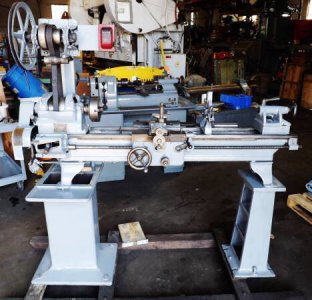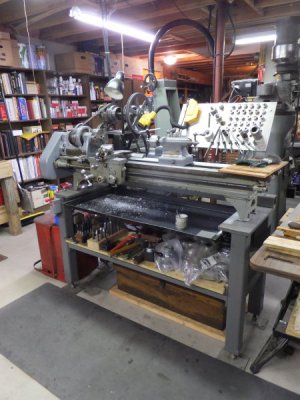Are there any pitfalls in adding a motor controlled by a variable frequency drive to an antique lathe that operates from a countershaft set up such as the one in the attached pic? The lathe's motor currently runs a v-belt to the countershaft drive pulley which, in turn, runs the countershaft/spindle belt.
I'm wondering if I could swap the motor for one controlled with a VFD, such as the KBAC-24D, and control the lathe's spindle speed with the VFD instead of the step cone on the counter shaft (as well as have a forward and reverse option). I'm guessing there may be some problems in doing this that I am unaware of. Any input is appreciated.

I'm wondering if I could swap the motor for one controlled with a VFD, such as the KBAC-24D, and control the lathe's spindle speed with the VFD instead of the step cone on the counter shaft (as well as have a forward and reverse option). I'm guessing there may be some problems in doing this that I am unaware of. Any input is appreciated.


